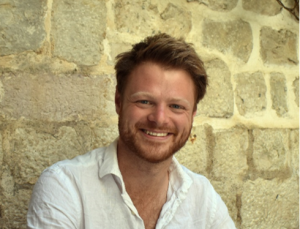Climate research in the Kalahari Desert: the KAPEX field campaign
9 Feb 2024|Callum Munday
- Research

The Kalahari Desert in Southern Africa is warming at over twice the global rate, with climate projections indicating a gradual drying of the Kalahari, leading to more intense droughts. These trends present a profound threat to communities who have lived there for millennia and to the unique desert ecosystems. Over Christmas and New Year, a team led by Callum Munday (Fellow by Special Election in Geography at St Edmund Hall) from the University of Oxford and the University of Cape Town travelled to the Kalahari to retrieve some of the first detailed atmospheric observations from inside the Kalahari Desert in a bid to understand these troublesome climate trends.
We were especially interested in a low-pressure system known as the Kalahari Heat Low, which is driven by intense surface heating and is linked with drought. Kitty Attwood, Co-I and DPhil student studying the heat low, explains, “with increasing temperatures, climate models show the Kalahari Heat Low is getting stronger and stronger, contributing to reduced rainfall across southern Africa. To trust the models, we needed go and check what the heat low looks like in the real world.”
It certainly felt hot. In the in 43-degree heat, a week before Christmas, we installed several strategically placed automatic weather stations and a LIDAR system in the Kalahari Desert. Through Christmas and New Year, we carried out a strict schedule of 4-hourly weather balloon releases to measure the characteristics of the heat low, and to tune into the rhythm of the Kalahari atmosphere. Doing fieldwork in the extreme heat was a new challenge for most of us. Charlie Knight, a DPhil student, remembers “It was quite sweaty in the day. I ended up having to construct an aircon unit for the LIDAR system from pallets, a desk fan, and some towels. It was the first time I’d done that.”

With the main setup working well, we embarked on an intensive observation period to measure an especially strong heat low event. This involved a research aircraft, which we flew over the desert to measure the size and shape of the heat low. Four undergraduates from the School of Geography were particularly excited by this and took charge of analysing data in real time to direct the flight tracks.
With the data back in Oxford, the next phase is to compare the data with high-resolution climate model simulations from the UK Met Office. We are hoping that the observations provide new insights into the operation of the southern African climate, and how it might respond to future warming.
The research was funded by the Gilchrist Fieldwork Award via the Royal Geographic Society (RGS) and the John Fell Fund. SoGE undergraduates were funded by awards from the RGS and Keble Association. The project would not have been possible without the support from collaborators at the Department of Oceanography at the University of Cape Town. The team is also deeply grateful to S.J. Koortzen and the team at Kgalagadi Lodge, Quentin Hurt for flying us in circles around the desert, the Cullinan family at Cullinan Guest Farm, the owners and staff at Kalahari Info Centre & Tented Accommodation, Rietfontein, and Jaco, Andy and the team at Walker-Midas in Upington. Special thanks also to Dave Thomas for letting us borrow his car.
For more information visit the campaign website.
Category: Research
Author

Callum
Munday
Callum is a Fellow by Special Election in Geography at St Edmund Hall and is a climate scientist specialising in African climate and climate change. He is currently working on a NERC- funded project in southern Africa and is a visiting scientist at the UK Met Office.